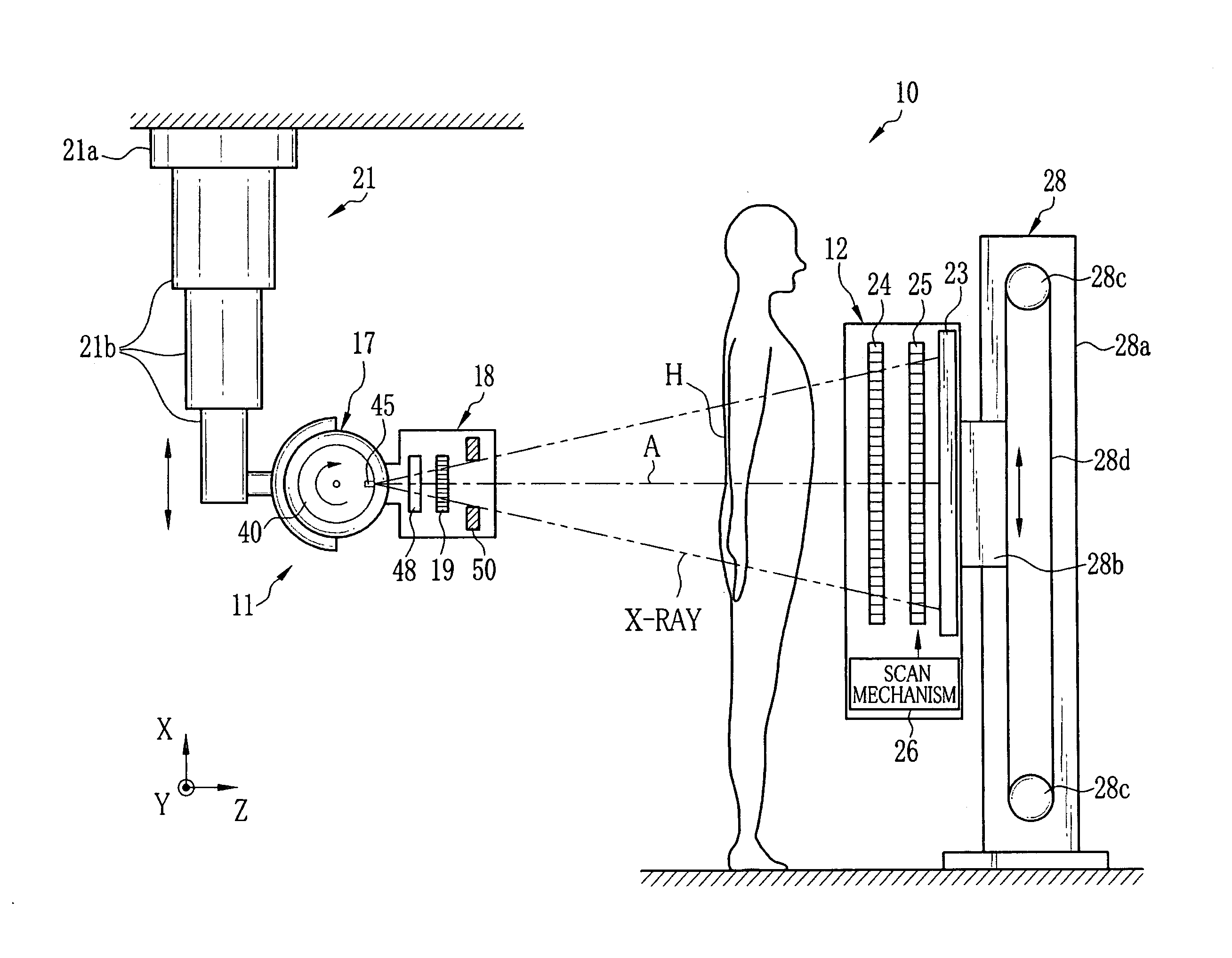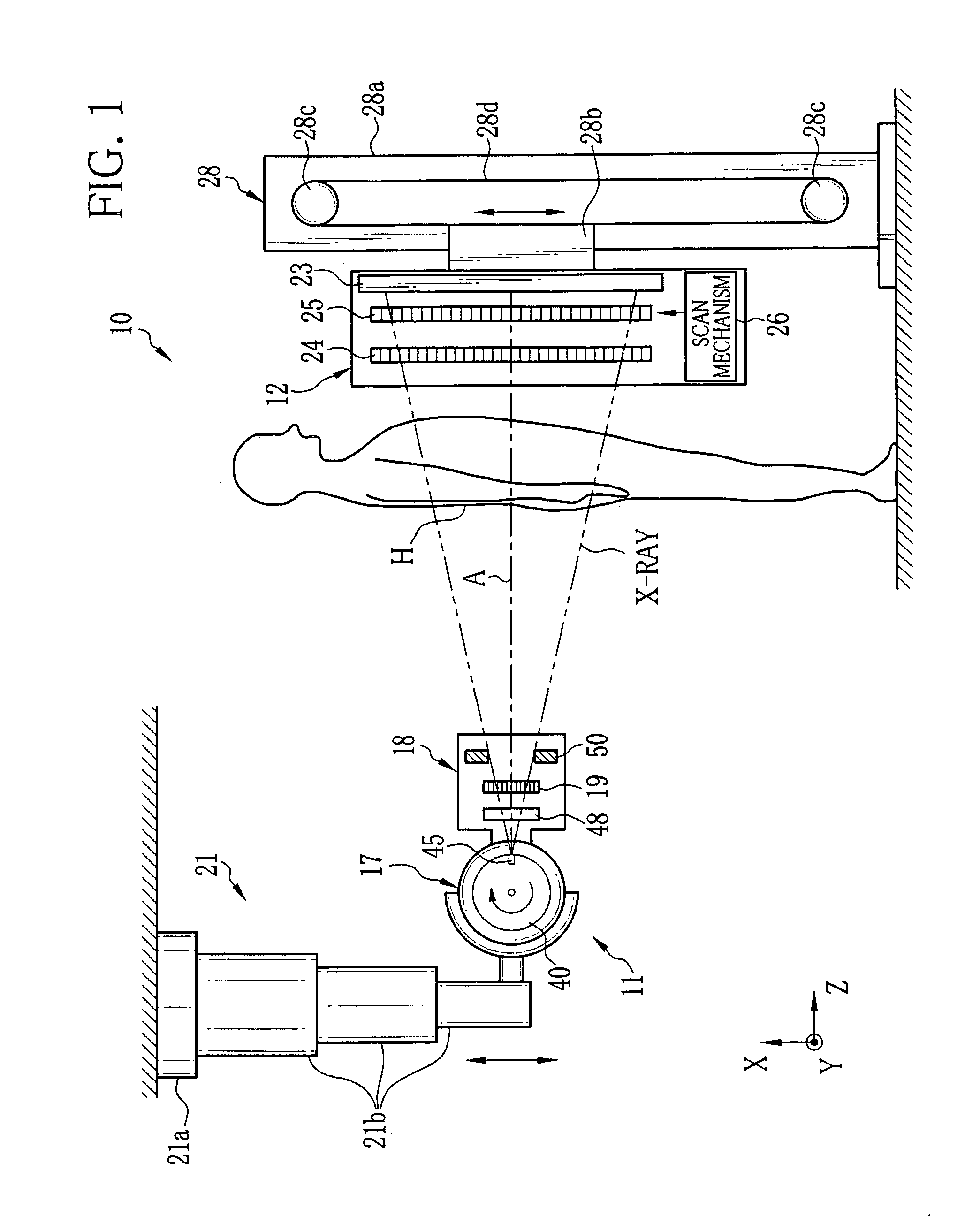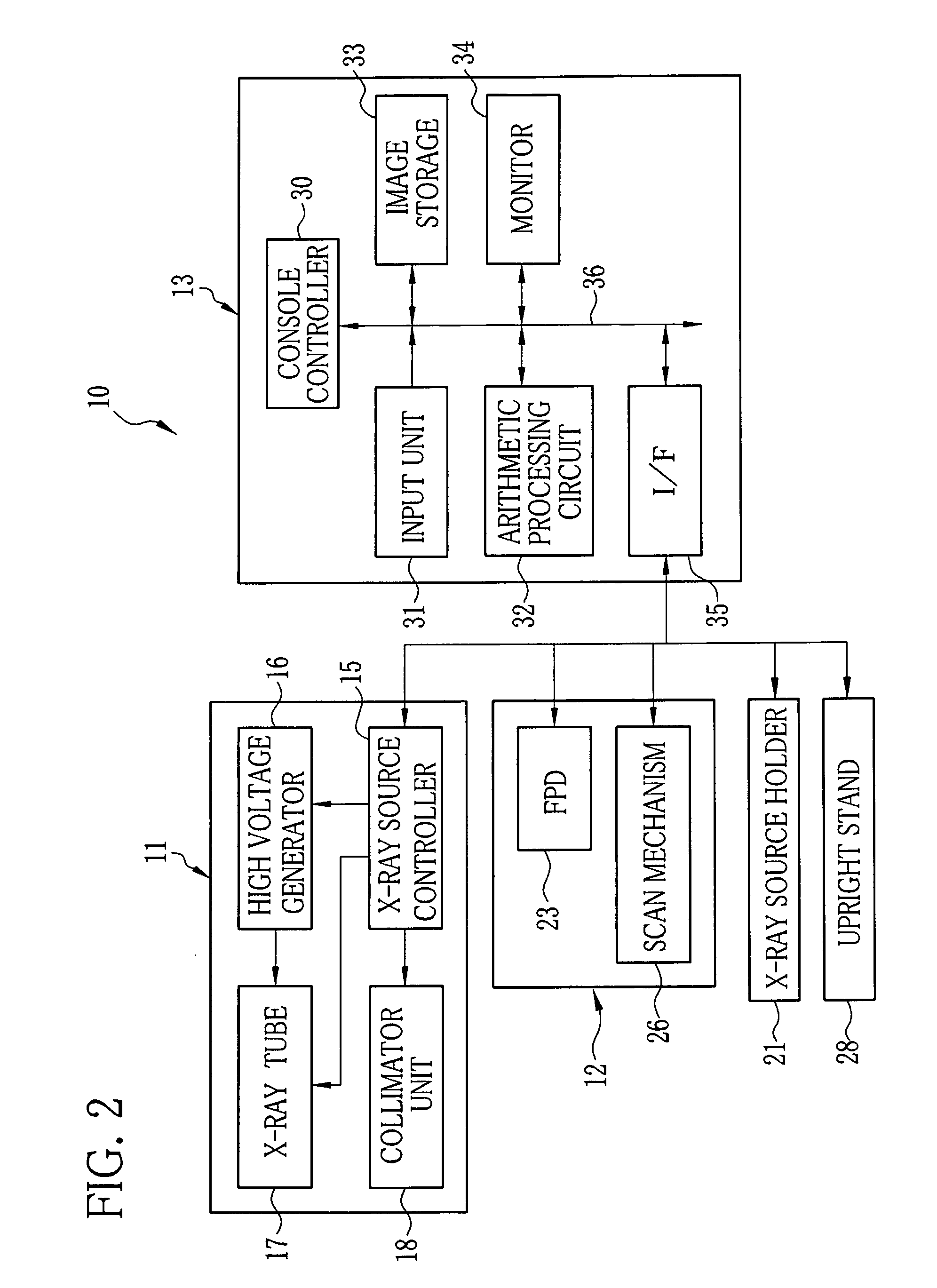Radiation imaging system and collimator unit
a radiation imaging and collimator technology, applied in imaging devices, instruments, and handling using diaphragms/collimeters, etc., can solve the problems of reducing the sharpness of an x-ray image, increasing the size of the x-ray focus, and poor image quality, so as to prevent further reduction of the intensity of radiation, improve image sharpness, and reduce radiation intensity
- Summary
- Abstract
- Description
- Claims
- Application Information
AI Technical Summary
Benefits of technology
Problems solved by technology
Method used
Image
Examples
first embodiment
[0041]As shown in FIGS. 1 and 2, an X-ray imaging system 10 performs imaging of a standing patient. The X-ray imaging system 10 includes an X-ray source 11, an imaging unit 12, and a console 13. The X-ray source 11 applies X-rays to a body part to be imaged (object) H of the patient. The imaging unit 12 is disposed oppositely to the X-ray source 11, and detects the X-rays that have emitted from the X-ray source 11 and passed through the object H to produce image data. The console 13 controls X-ray application from the X-ray source 11 and imaging operation of the imaging unit 12 in response to operation by an operator. Also, the console 13 applies arithmetic processing to the image data produced by the imaging unit 12, and produces a phase contrast image.
[0042]The X-ray source 11 is constituted of an X-ray source controller 15, a high voltage generator 16, an X-ray tube 17, and a collimator unit 18. The X-ray tube 17 emits the X-rays in accordance with a high voltage applied from the...
second embodiment
[0093]FIG. 10 shows an X-ray imaging system 75 according to a second embodiment of the present invention. The X-ray imaging system 75 has a bed 76 for laying the patient, and takes an X-ray image of the lying patient. Since the X-ray source 11 and the imaging unit 12 have the same structure as those of the first embodiment, each component thereof is designated by the same reference numeral as that of the first embodiment. Only difference from the first embodiment will be described. The other structure and operation are the same as those of the first embodiment, and detailed description thereof will be omitted.
[0094]In this embodiment, the imaging unit 12 is attached to a bottom surface of a top table 77 so as to face the X-ray source 11 across a body part to be imaged (object) H of the patient. The X-ray source 11 is held by the X-ray source holder 21, and an angle changing mechanism (not shown) of the X-ray source 11 aims the X-ray application direction downward. In this state, the...
third embodiment
[0097]FIGS. 11 and 12 show an X-ray imaging system 80 according to a third embodiment of the present invention. The X-ray imaging system 80 takes an X-ray image of the standing or lying patient. In the X-ray imaging system 80, the X-ray source 11 and the imaging unit 12 are held by a swing arm 81. The swing arm 81 is coupled to a base 82 in a swingable manner. Since the X-ray source 11 and the imaging unit 12 have the same structure as those of the first embodiment, each component thereof is designated by the same reference numeral as that of the first embodiment. Only difference from the first embodiment will be described. The other structure and operation are the same as those of the first embodiment, and detailed description thereof will be omitted.
[0098]The swing arm 81 is constituted of a′ U-shaped member 81a and a linear member 81b connected to one end of the U-shaped member 81a. The imaging unit 12 is attached to the other end of the U-shaped member 81a. In the linear member ...
PUM
| Property | Measurement | Unit |
|---|---|---|
| thickness | aaaaa | aaaaa |
| spacing distances d1 | aaaaa | aaaaa |
| voltage | aaaaa | aaaaa |
Abstract
Description
Claims
Application Information
 Login to View More
Login to View More - R&D
- Intellectual Property
- Life Sciences
- Materials
- Tech Scout
- Unparalleled Data Quality
- Higher Quality Content
- 60% Fewer Hallucinations
Browse by: Latest US Patents, China's latest patents, Technical Efficacy Thesaurus, Application Domain, Technology Topic, Popular Technical Reports.
© 2025 PatSnap. All rights reserved.Legal|Privacy policy|Modern Slavery Act Transparency Statement|Sitemap|About US| Contact US: help@patsnap.com



